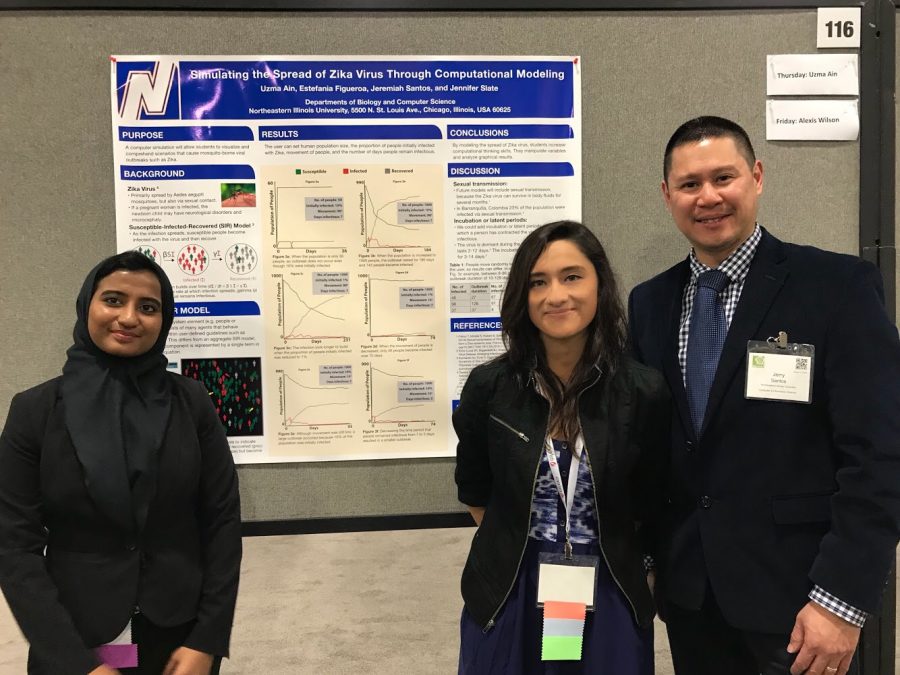Zika virus, students win research award
November 14, 2017
Three NEIU seniors began research on the Zika Virus in May and turned it into an interactive program to show how the virus spreads through a population.
Biology students Uzma Ain and Estefania Figueroa, along with Computer Science student Jerry Santos, were selected to go to the Society for Advancement of Chicanos and Native Americans in Science (SACNAS) conference on Oct. 22, for their research on the Zika Virus.
While at the conference Ain won an award for Outstanding Poster Presentation.
“Winning this [award] helps make NEIU more visible in the science spectrum,” Santos said. “It is a big deal to our departments of biology and computer science.”
Ain said she was excited, grateful and the award was unexpected because this was the first time she had done research and presented it at a conference.
The title of the poster was “Simulating the Spread of Zika Virus Through Computational Modeling.” This poster showed background information about Zika Virus, the purpose of creating this simulation and the conclusion Ain, Santos, and Figueroa wants to find through testing at NEIU.
The testing is currently available for students who are in the process of becoming teachers in one biology classroom, Ain said.
“The program was well received so far,” Santos said.
Ain, Santos, and Figueroa will have the official results of the testing at the end of the semester, Ain said.
Zika Virus is most commonly spread by Aedes Aegypti, a certain type of mosquito, Figueroa said. Sexual transmission or vertical transmission, which is passing the virus from mother to fetus, are other ways this virus can spread, Ain said.
Ain, Santos, and Figueroa wanted to make sure students from grade school through high school, as well as college students and professional researchers, could use and understand this program.
“Students in biology classrooms usually just look at textbooks and then look at the facts generated by the text,” Santos said. “We wanted to reintroduce the Scientific Method.”
Santos said the program will allow students to manipulate the variables that fuel a viral outbreak, allowing them to watch the epidemic spread.
When students create a hypothesis to test, even if the outcome doesn’t match the prediction, they can come up with a new one. Figueroa said that for visual learners, in particular, this is better than simply reading about how the virus is spread
In this program, the population moves through three stages: susceptible, infected, and recovery or SIR. SIR modeling is used by both professors and epidemiologists to help students learn about viruses.
A susceptible person is green, an infected person is red and a recovered person is gray. Those in the population who can get the virus are in the susceptible stage. Once a person is in the recovery stage they can no longer contract the Zika Virus.
“As a biologist, research and reading articles is an everyday occurrence, and it was fascinating to see this project come to life,” Figueroa said.
Ain, Figueroa, and Santos have been asked to continue with the research. However, nothing has been decided.
Santos said the important thing was that they got the ball rolling and hopes people in the future will look at this program and make it better.








